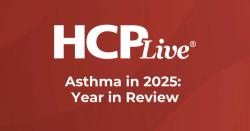
OR WAIT null SECS
Algorithm for Outpatient Treatment of Cystic Fibrosis in Young Patients Developed
Despite the prevalence of pulmonary exacerbations in patients with cystic fibrosis, there is no standardized definition to diagnose these events in affected patients.
A recent investigation into cystic fibrosis in children and young adults suggested that antimicrobial stewardship initiatives could be beneficial in standardizing care and fostering positive working relationships between cystic fibrosis pulmonologists, ID physicians, and pharmacists.
Cystic fibrosis has affected more than 30,000 individuals in the United States,with a major cause of morbidity and mortality being pulmonary disease and pulmonary exacerbations (PEx), the latter of which if often treated with antibiotics.
Despite the prevalence of PEx in patients with cystic fibrosis, there is no standardized definition to diagnose these events in affected patients, although most include an increase in respiratory symptoms and/or acute decrease in lung function.
Using the framework of antimicrobial stewardship, Geovanny F. Perez MD, MS, Division of Pulmonary Medicine, Oishei Children's Hospital, and fellow investigators aimed to develop an empiric antibiotic algorithm as a quality improvement initiative to initiative to develop consistency among providers in prescribing empiric intravenous (IV) antibiotic therapy for PEx events.
The Methods
The quality improvement project was conducted at the Children’s National Hospital, a tertiary-care hospital with an accredited CF center.
Pediatric patients and young adults up to 26 years were admitted to the free-standing children’s hospital, and IRB approval for routine collection of demographic and clinical data around the time of PEx in persons with cystic fibrosis was obtained.
Participants 18 years and older provided written consent for the study, while written parental consent was obtained for patients under 18 years old, and assent was obtained from children between the ages of 11 and 17 years.
From there, the data acquired from each participant was used to assess baseline antibiotic use and the impact of the quality improvement initiative on IV antibiotics used for PEx treatment between January 1, 2017 and March 31, 2020.
Soon after, a multidisciplinary team of pulmonologists, infectious disease physisicans, and pharmacists with expertise in cystic fibrosis at Children’s National Hospital was assembled to develop the empiric antibiotic algorithm beginning in July 2017.
The Findings
The quality improvement project assessed the antibiotic treatment courses of a total of 56 people with cystic fibrosis, with a total of 226 PEx episodes occurring during the study period.
Of those treatment courses, 25 were prescribed in the outpatient setting only (10 in the baseline period and 15 during the intervention), and the remaining courses were all initially prescribed in the inpatient setting.
Investigators observed that the mean age at the first PEx was 12 years old (SD 6.7). Regarding demographics, 55% of all participants who experienced PEx were female, 80% were white, and 71% were non-Hispanic.
After the initiation of the algorithm, the investigators noted that the proportion of PEx with antibiotic use consistent with the algorithm increased from 46.2% to 79.5%, and documentation of justification for broad-spectrum antibiotics increased from 56% to 85%.
Additionally, the use of infectious disease consults increased from 17% to 54%.
The team added that as young patients at their institution are introduced to effective CFTR modulators, the development of an algorithm for outpatient treatment could become an unmet need.
“We would encourage other cystic fibrosis centers to explore their own trends in practice to determine whether a similar intervention may be both feasible and beneficial in the treatment of PEx in perosns with cystic fibrosis,” the team wrote.
The study, "Measuring the Impact of an Empiric Antibiotic Algorithm for Pulmonary Exacerbation in Children and Young Adults with Cystic Fibrosis," was published online in Pediatric Pulmonology.


